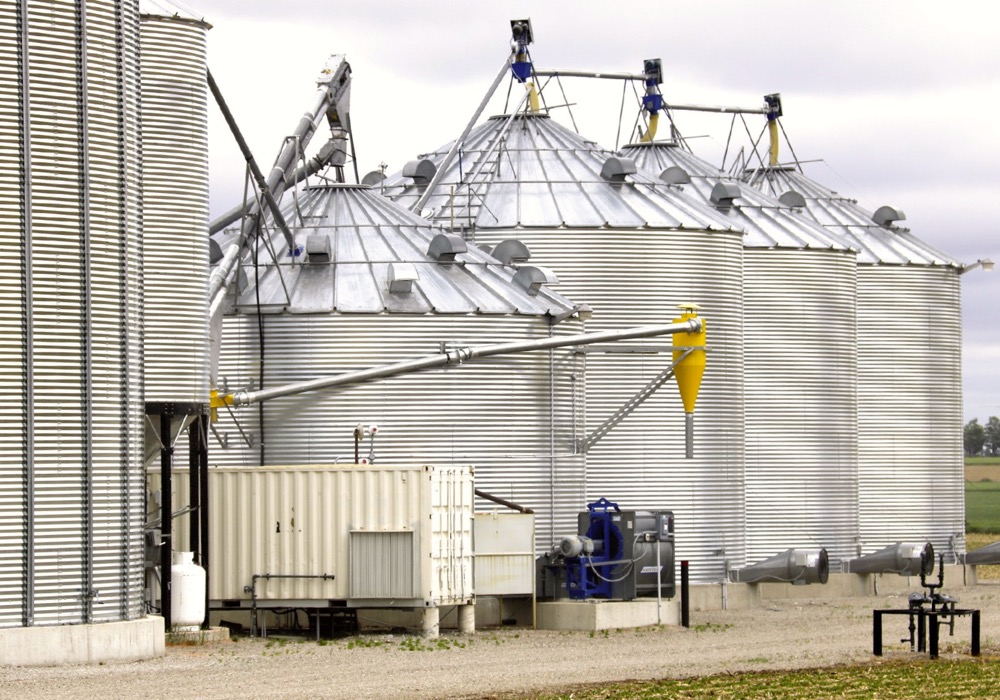Ontario’s cool, wet spring has widespread repercussions for the fruit and vegetable sector.
So far it has delayed flowering and planting, caused some farms to reschedule the arrival of temporary foreign workers and created uncertainty about the viability of transplanted seedlings.
Why it matters: Fruits and vegetables are high value crops and not getting enough of them planted will have effects on farm income.
Will Heeman recorded a message for his family’s third-generation strawberry and U-pick farm near Thorndale: “This year’s season will be the latest on record for our farm over 55 years,” blaming delayed flowering of most varieties.
Read Also

Ontario Agricultural Stewardship Initiative third intake opens in August
Ontario’s Agricultural Stewardship Initiative (ASI)$3 million cost-share program intake opens on Aug. 13 at 9 a.m., helping agriculture, agri-food, and agri-based businesses improve energy efficiency and increase competitiveness, sustainability, and productivity.
Some everbearing varieties are flowering now, with fruit expected to begin ripening sometime in mid-June, “but they will be very, very limited in supply.”
Planting conditions for peas, green beans and sweet corn destined for the processing market, meanwhile, “have been poor in all (traditional) growing areas,” Cathy Lennon, general manager of the Ontario Processing Vegetable Growers (OPVG) said.
“We are about 40 to 45 per cent (planted) for green peas, 10 per cent for sweet corn and 12 per cent for green beans,” she said in early June.
Heeman says the farm hopes to see ripening of June-bearing varieties beginning in late June, to allow for opening of U-pick operations by the crucial Canada Day holiday on July 1.
But he cautioned the schedule is “depending on the weather, and we will need to have some warmer days coming on over the next few weeks” to prevent further delays.
Gordon Stock, who handles senior policy and government relations for the Ontario Fruit and Vegetable Growers Association (OFVGA), said he has heard similar concerns about delayed flowering raised by tree fruit growers.
“Even as I look out the window (in OFVGA’s Guelph office), only now are the trees fully in leaf. And that should have happened several weeks ago.”
Producers of various other horticultural crops, meanwhile, may think tree fruit and berry growers should count themselves lucky that a crop is in the ground. Persistent wet weather has kept many farmers entirely out of their fields, preventing them from putting seed or transplanted vegetable crops into the ground.
Agricorp has extended some planting deadlines for growers wanting to be covered by crop insurance, including recently for corn and soybeans. “Where appropriate, they have been extending crop production deadlines for this coming season,” says Stock.
Even some of those extended deadlines, including for onions for seed and Spanish onions, have now also passed or will be passed soon.
Lennon confirmed the onion deadline situation but said extensions are being considered for other crops.
In an email following her interview, Lennon said Agricorp approved a request to extend the last day to plant processing green peas from June 1 to June 11 for municipalities within Chatham-Kent, except Tilbury East and Romney townships. There were no changes for other regions.
Lennon said it marked the first time Agricorp has granted a 10-day extension on processing peas. Extensions have typically been for four or five days.
Stock said that for fruit and vegetables, there is always a range of cut-off dates, depending on the region of the province. Producers with specific questions should get in touch with Agricorp.
However, he said in general, there is coverage under existing crop insurance policies for those who end up with unseeded acreage due to weather. And for horticultural producers in particular, under the self-directed Risk Management Program option through Agricorp, this spring’s wet weather does qualify as a reason to withdraw from the account in the case of financial strain.
On the federal side, Stock said the government granted an extension on signing up for AgriStability in response to the global trade troubles with canola. But the extension applies to all crops, and he said it could be an option for some moisture-stressed horticultural producers.
“The existing tools are there for farmers to work through these types of scenarios.”
Transplanting is a practice particular to some horticulture crops, and Stock acknowledged the increased uncertainty about the potential viability of transplants the longer farmers have to wait to put them in the ground.
He suggested the crops for which transplants are typically grown on-farm, such as broccoli, could allow for greater flexibility compared to crops for which transplants are typically brought in from off-farm, such as tomatoes. But as the wet weather continues, the situation becomes more stressful no matter the production system.
Lennon estimated about half of the planned 10,000 Ontario acres of processing tomato transplants were in the ground by May 29, although many more have been planted since.
Another aspect that presents a challenge for many horticulture producers is the timing of the arrival for temporary foreign workers.
It’s a balancing act that makes the weather delays that much more complex than a commodity crop grower waiting it out until the soil dries, said Stock. But he added that growers who use the program generally know how to pinpoint the workers’ arrival, and if they don’t, there are representatives at their commodity organizations who can help.
“You want to ensure you have enough workers when there is work to be done. But, on the other hand, you don’t want them sitting in the bunkhouse with nothing to do.”
As well, the workers want to be working and earning money. If that’s not happening, they’re happier being home with their families, he said.
He said one broccoli producer on the OFVGA board of directors described being between two to three weeks behind getting seedlings into the ground.
Lennon said pea growers could be the first to abandon their crop plans.
“The pea crop at this point is probably the most significant concern and we expect it will be very, very difficult to plant the required acres in a timely fashion in order to assure a quality, consistent product for our processors.”
She added her recent conversations with OPVG members have reflected “frustration,” but certainly not panic.
“They recognize … it’s the nature of the business and that conditions will still improve in time to plant a crop.
“We will need heat, though, going forward.















